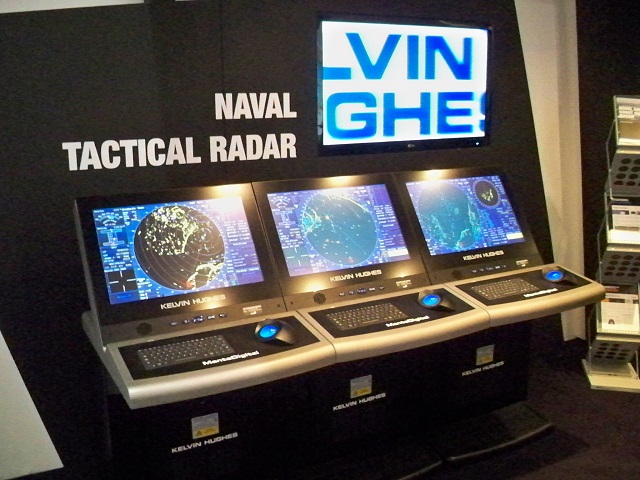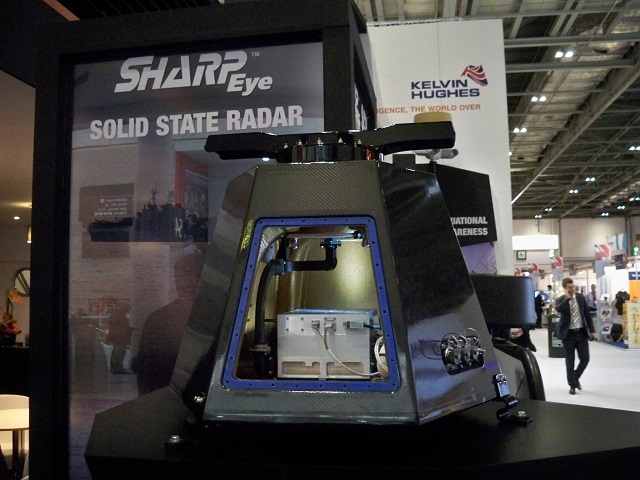 Kelvin Hughes workstations at DSEI 2013 (Photo: Navy Recognition) |
|||
The components
inside the unit have also been improved. The use of a synchronous motor
has removed the need for a gearbox, with the antenna rotation rate being
controlled electronically. Also, all components are now Line Replaceable
Units (LRUs). However, with no magnetron and no gearbox, the new system
has a greatly reduced maintenance requirement for which no specialist
training is required. In addition, the use of the latest GaN transistors enables more energy to be transmitted without compromising the overall low power benefits of SharpEye™. An increase from 200W to up to 300W of peak power ensures enhanced target detection whilst still resulting in a very low probability of ESM systems detecting the radar signature of SharpEye™. Because the new system is so light, it can be installed simply, quickly and safely. The antenna can be attached to the turning unit at ground level and the entire unit lifted on three removable lifting bolts into position on the ship’s structure in one operation. Just three sealed electrical connectors need to be plugged into the housing connection sockets for the radar to become operational. |
|||
Kelvin Hughes unveis New SharpEye Upmast Radar with carbon composite housing at DSEI 2013
- Posted On











